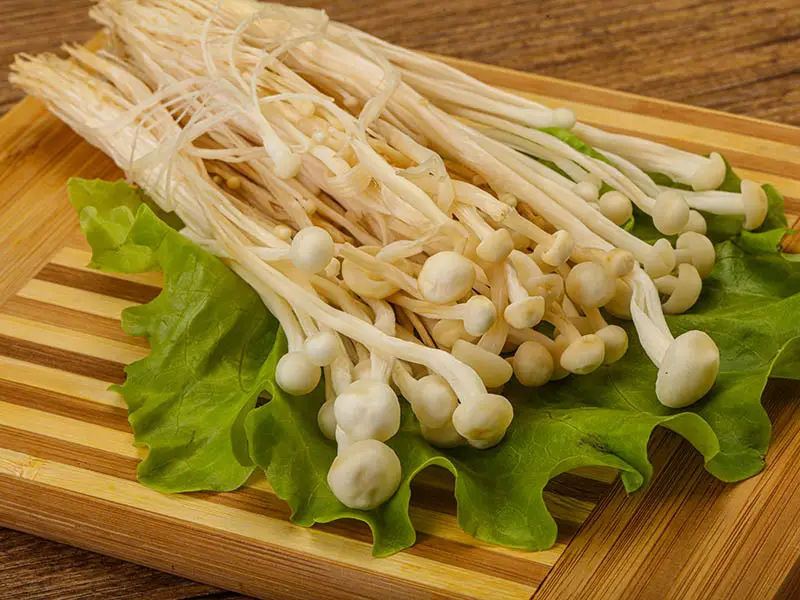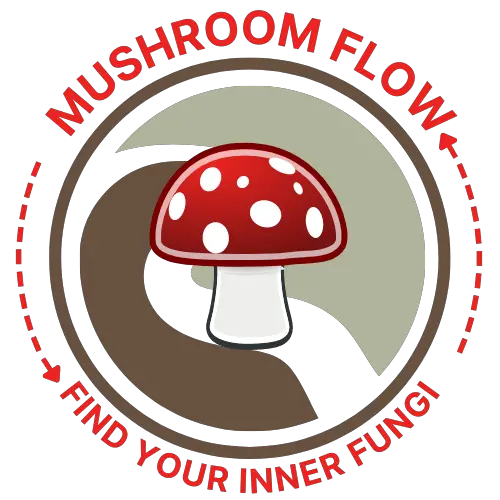When people talk about gourmet mushrooms, the conversation typically revolves around a few main topics: how to grow them, where to forage them, how nutritious and delicious they are, and how (unfortunately!) expensive they can be. Enoki mushrooms are slightly different, as until recently they tended to stay on the affordable side of gourmet mushrooms.
Enoki mushrooms are becoming more expensive due to decreasing supplies while demand has increased. Two of the main reasons for the limited enoki mushroom supply are crop contamination and transportation issues.

The prices of this delicious mushroom have more than doubled over the past 4 to 5 years, but there are other ways to get enokis, like foraging or cultivating your own. Read on for tips on how to find or grow enoki mushrooms.
Why are enoki mushrooms becoming more expensive?
Nina Coomes explored why enoki mushrooms have skyrocketed in price so suddenly, going from a rate of about $1 per package to $6 per package. After making several calls to suppliers, Coomes discovered that some farmers had stopped producing enoki mushrooms entirely, and other farmers who continued to grow enoki were suffering from listeria contamination in their crops.
Because demand stayed steady while the supply rapidly dropped, enoki prices had nowhere to go but up. As prices go up, not only will enoki lovers suffer, but people who may have chosen to take a chance on a new mushroom may pass right by, never getting to experience the enoki.
Where can I get enoki mushrooms?
Buying Enoki Mushrooms
Enoki mushrooms can be purchased at Asian markets. They are normally sold in plastic packaging. Look for distinctive mushrooms, normally between 6-7 inches long and white or golden in color.
Foraging Enoki Mushrooms
Enoki mushrooms are an interesting specimen for foragers because the foraged mushroom and the cultivated mushroom are very different in appearance.
The cultivated mushroom (as stated before) is very long, and slender and can vary from white or golden in color. The plastic packs come with dozens of mushrooms all squeezed together.
Enoki mushrooms that grow naturally have thicker stems and broader caps. The top of the cap has almost a burnt look to it, with the middle being a dark brown/black that gets lighter closer to the edges. In addition, the cap has a slimy and sticky residue.
The reason for these differences is due to the lack of light and oxygen given to the cultivated mushrooms. While mushrooms may need less light than plants, many still need some light to grow correctly. Without light or enough oxygen, they begin to grow long and spindly.
Enokis love the cold and can be foraged at the end of fall or the beginning of spring. Depending on the region, it could be available all winter. This makes it an excellent choice for mushroom foragers. However, it is very important to emphasize that this mushroom has many extremely toxic look-alikes, making it an unwise choice for beginning foragers.
The characteristics of this mushroom include:
- Reddish brown cap that is darker in the center
- Slimy or sticky residue on the cap
- The fuzzy stem that is darker towards the base of the stem
- Gills are white or yellow
- The spore print is white. This is the most important attribute
Ashley Adamant, a mushroom forager, explained that the spore print is the most important identifying characteristic. If the spore print is any other color, discard the mushroom since it is probably deadly. Never pick or ingest mushrooms without being 100% certain they are not poisonous.
Growing Enoki Mushrooms
Growing Enoki mushrooms is similar to growing many other types of mushrooms. If you are a beginner you can order a grow kit to make the experience easier. This is often the recommended route because it can make mushroom cultivation a positive experience. This first, magical experience can push you through the failures that are sure to come on your mushroom-growing journey.
Looking for an easy way to grow mushrooms at home? Check out these fun grow kits on Amazon.
For those that would like to grow mushrooms from scratch, it is important to note that enoki mushrooms prefer wood substrates. This means that you should use sawdust or wood chips when forming your substrate. Different additives, such as lime or gypsum, can increase nutrient availability.
Before beginning the process, sterilize all equipment. Use mason jars to hold the substrate, and sterilize the sawdust by boiling it in water and leaving it in hot water overnight. This will help the substrate be well-hydrated and sterilized. You will also need to pour off any excess water before putting the substrate in jars.
In addition to sterilizing your equipment, make sure that you have a space that is properly sanitized to minimize contamination. This means to:
- Work in a room without carpet (if possible)
- Use an air filter or a glove box while placing the substrate into the jars
- Keep the air as still as possible (no fans or open windows)
You will also want to poke four holes into the top of your mason jar lid, and then cover those holes with masking tape. This will be the injection site for your substrate. Please make sure the holes are large enough for a syringe to fit into them. Don’t go through all this work just to find out you didn’t make the lid holes big enough.
After you have sterilized all of your equipment, substrate, and workplace you are ready to move on. You will want to place the substrate into your mason jars and loosely place their lids on. When you have the lids on, put aluminum foil over the lids and then place them in a giant pot with water at the bottom. You will want to make sure the jars are elevated slightly above the water. Allow the jars to steam-sterilize for a couple of hours.
Once the substrate has been sterilized once again, move it quickly to your sterilized workspace. Here is where you will perform the spore injection. Lift up the tape covering each hole and try to put an equal amount into each. Replace the tape.
From then on it becomes a waiting game to see if the spores germinate and inoculate your substrate. When you feel confident that you have inoculated your substrate, you will want to move your containers to a good place to fruit. It is important to remember that enoki mushrooms are cold-loving so keeping them in temperatures ranging from 50-55 degrees is important.
How to Preserve Enoki Mushrooms?
Enoki mushrooms are commonly sold in plastic containers. To ensure they keep well, it is important to remove them from this container as soon as possible. Enoki mushrooms are filled with water, and that water will bleed out of them. Plastic can trap water, causing your mushrooms to go bad faster.
For the best shelf life, store fresh enoki mushrooms in a paper bag in the fridge. They can last anywhere from a couple of days to a week when stored in this manner.
You can also dry and freeze enoki mushrooms, allowing them to last much longer. While they won’t be as fresh when you use them, they will be there for you when you need them. They make great additions to any soups or stir-fries.
Final Thoughts
Enoki mushrooms are curious mushroom that almost lives two lives: one as a popular, cultivated mushroom and the other as a shy, natural mushroom. Due to supply chain issues, this mushroom has seen an increase in price, but that doesn’t stop it from being delicious.
As our society begins to heal from a pandemic and readjust supply chains, the prices may ease back. When they do (or even before then), go ahead and try the enoki mushroom out. You won’t be disappointed.
